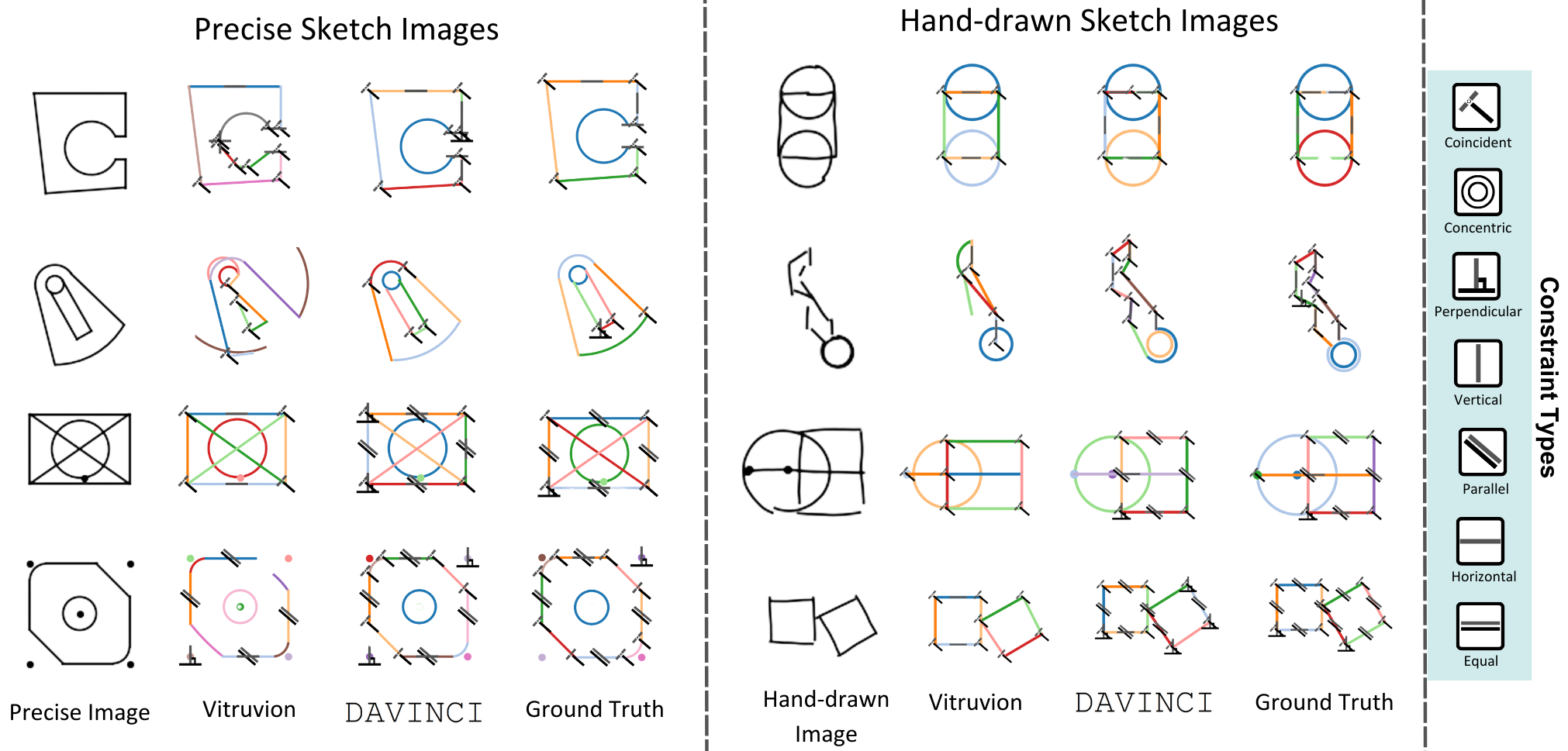- The paper introduces a single-stage transformer architecture that jointly infers CAD sketch primitives and constraints from raster images.
- It leverages Constraint-Preserving Transformations (CPTs) to augment training data, achieving superior performance even with minimal data availability.
- Experiments on SketchGraphs demonstrate significant improvements over multi-stage methods, setting new benchmarks in CAD sketch inference.
DAVINCI: A Single-Stage Architecture for Constrained CAD Sketch Inference
DAVINCI introduces a transformative approach to parameterizing and inferring constraints for Computer-Aided Design (CAD) sketches directly from raster images. By deploying a unified architecture, it advances both the practical and theoretical foundations for reverse engineering CAD designs.
Background and Motivation
The emergence of large-scale CAD sketch datasets, like SketchGraphs, has intensified research into CAD applications such as sketch synthesis and auto-constraining. Central to this paper is constrained sketch inference, crucial to streamlining design processes by transforming raster images into parametric CAD sketches. Constrained sketches, defined by geometric primitives and constraints, are foundational for CAD model editing and rapid iterations in design workflows.
DAVINCI Architecture
DAVINCI's architecture leverages a single-stage transformer framework to jointly infer both primitives and constraints from binary sketch images. This contrasts sharply with existing methods that segment parameterization and constraint inference into separate stages, a process prone to error accumulation.

Figure 1: We propose DAVINCI, a novel single-stage network for constrained CAD sketch parameterization. DAVINCI effectively parameterizes different types of input sketches, from precise to hand-drawn as well as 2D cross-sections. We also introduce Constraint-Preserving Transformations (CPTs), i.e. an augmentation strategy tailored to constrained CAD sketches.
DAVINCI's key innovation lies in its dual embedding approach: [prim]-embeddings for primitive tokens and [constr]-embeddings for geometric constraint inference. This setup ensures linear scalability with node count, optimizing the inference process. It employs techniques like the Hungarian algorithm for optimal matching between predicted and ground truth primitives.
CPTs represent a novel augmentation strategy addressing data scarcity in CAD sketch training. By leveraging FreeCAD's API, CPTs apply perturbations that respect original design constraints, ultimately contributing to a dataset—CPTSketchGraphs—with 80 million augmented sketches.

Figure 2: Example Constraint-Preserving Transformations (CPTs) of CAD sketches from CPTSketchGraphs. CPTs are generated via integration with the FreeCAD API.
Experiments and Results
DAVINCI achieves state-of-the-art results on SketchGraphs, excelling in both precise and hand-drawn image settings. Metrics such as Primitive F1 Score (PF1) and Constraint F1 Score (CF1) significantly surpass competing methods, such as Vitruvion.

Figure 3: Qualitative comparison with Vitruvion.
In augmentation strategy comparisons, CPTs allow DAVINCI to perform effectively with only 0.1% dataset availability, maintaining competitive accuracy and constraint fidelity.
Implications and Future Directions
DAVINCI's architecture demonstrates the feasibility and efficiency of single-stage sketch parameterization, significantly improving constraint recovery. The introduction of CPTs augments training versatility, potentially reducing the need for extensive labeled datasets.
Beyond performance metrics, these developments pave the way for further innovations in automated design synthesis and reverse engineering. Within this context, extending DAVINCI to handle 2D cross-sections from 3D scans presents a promising avenue for future research.
Conclusion
DAVINCI represents a substantial advance in CAD sketch inference by integrating cutting-edge architectural designs and augmentation techniques. These innovations not only set new benchmarks for performance but also expand the horizon for research in CAD applications, challenging traditional methodologies and inspiring new lines of inquiry in automated design and reverse engineering.


